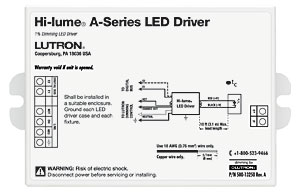LED lighting helps meet energy goals
Government facility managers are striving to limit energy consumption. Recent legislation, including the Energy Independence and Security Act of 2007, mandates aggressive energy-savings goals for public facilities. The act created the Office of Federal High-Performance Green Buildings, which sets policies and standards for building construction, operations and maintenance across government. The office works to ensure all federal buildings meet sustainable design and energy-reduction targets mandated in the act.
The 2007 legislation and the Energy Policy Act of 2005 require government facilities to decrease the total energy consumption of their buildings by 3 percent per year (over a 2003 baseline) annually through 2015 for a total reduction of 30 percent. The legislation also mandates that replacements of installed equipment, renovation or expansion of existing space employ the most energy-efficient designs and systems.
Lighting is a major area of energy consumption, accounting for about 19 percent of the total electric energy used in commercial buildings, according to the U.S. Department of Energy’s latest “Buildings Energy Data Book.”

LED lighting is one way that governments can meet their energy-saving targets, says Andy Wakefield, government business development director at Coopersburg, Pa.-based Lutron Electronics. “LED lighting provides excellent lumen output while achieving substantial energy savings. While LEDs do come at a premium, in many applications they provide a great ROI due to reduced maintenance costs and energy savings. LED lamps can have a life of up to 50,000 hours.”
The overall quality, controllability and performance of LED luminaires improved dramatically over the past year, Wakefield says. He notes, however, that like any light source, LEDs need to be properly controlled to ensure optimal user satisfaction and maximum energy savings.

Wakefield suggests that facility managers include dimmable LED drivers as part of a lighting system. “The drivers allow LED fixtures to employ advanced lighting energy management strategies (high-end tuning, daylighting, occupancy/vacancy sensing, personal control). These strategies allow government facilities to meet their challenging energy goals without sacrificing the productivity or performance of their work force.”
Wakefield talks about how government facilities are now using LEDs for general office space illumination. He has also discussed light control and light management strategies that government facilities managers can use.
This Lutron site discusses lighting applications in administrative spaces, and command and operations centers in government facilities.




















